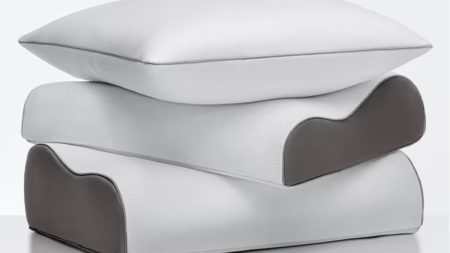Blue Origin’s Jeff Bezos has donated a New Shepard rocket booster and capsule to the Smithsonian’s National Air and Space Museum. The historic hardware will be displayed in renovated galleries set to open in 2026 on the National Mall in Washington, D.C. The reusable booster, known as Propulsion Module 4-2, was used for five uncrewed flights, including the New Shepard program’s first successful booster landing in 2015. Bezos had initially expressed a desire to retire the booster and put it in a museum before a test that was expected to destroy it, but fortunately, the booster survived. The booster has been exhibited at various events, including the 2017 Space Symposium in Colorado and Blue Origin’s New Glenn rocket factory in Florida.
The donated Blue Origin crew capsule, RSS First Step, carried the first people to ride New Shepard to the edge of space and back, including Bezos himself. The capsule has enabled 43 new astronauts to go into space over a three-year period. Now, Blue Origin is preparing a new crew capsule, RSS Karman Line, to join the New Shepard fleet. RSS First Step will eventually be decommissioned and displayed in the National Air and Space Museum’s Futures in Space gallery, which focuses on technology and advances in space exploration. In the meantime, a full-scale mockup of the crew capsule will be exhibited in its place.
The Blue Origin hardware will be showcased in the National Air and Space Museum’s RTX Living in the Space Age Hall, alongside artifacts from the mid-20th century Space Age. Curator Colleen Anderson highlighted the significance of rockets as the starting point for space exploration, noting that the display of Propulsion Module 4-2 next to a full-scale Juno 1 rocket will extend the story of launch vehicles to the present. Similarly, the display of the crew capsule alongside historic artifacts will provide visitors with a tangible connection to the advancements in space technology.
This donation is not the first time a Seattle-area billionaire has played a role in bringing space artifacts to the Smithsonian. Jeff Bezos previously funded the recovery of Apollo 11’s Saturn V rocket components from the ocean, which are now on display at the National Air and Space Museum. Microsoft co-founder Paul Allen donated the SpaceShipOne rocket plane, which won the Ansari X Prize for private spaceflight in 2004, to the Smithsonian. The SpaceShipOne rocket plane is now exhibited alongside other historic aircraft in the Milestones of Flight Hall.
The National Air and Space Museum’s Futures in Space gallery, which will eventually display the decommissioned RSS First Step capsule, focuses on advances in space exploration technology and enterprise. The exhibit will highlight the impact of historic artifacts on millions of visitors, inspiring dreams of space travel. Blue Origin’s donation of the New Shepard hardware is expected to enrich the museum’s collection of space artifacts and provide visitors with a unique perspective on the evolution of space exploration technology. Additionally, the display of the New Shepard booster and crew capsule will serve as a visual representation of humanity’s ongoing journey into space.















